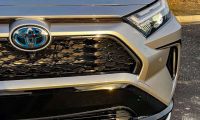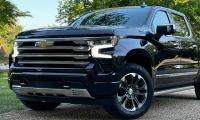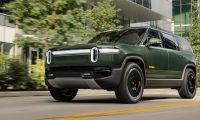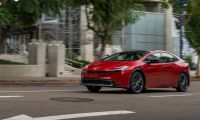I’ll break this comparison into 3 categories: Interfaces (including various tactile interactions with the car as a driver and passenger), Features (focusing primarily on safety/driver assistance and infotainment), and Fueling (an important part of their use on trips). Undoubtedly, there are more that we could apply, but I think these three are not covered as often in reviews and the performance of the two vehicles, as different as they are, isn’t a very interesting comparison.
Interfaces:
Sliding into the driver’s seat of the Kia is easy (it is an SUV with about 7” of ground clearance after all) and instantly comfortable (the seats in my top trim SX-P are quite comfy). The front seats have more than enough controls to satisfy this finicky driver, more than my Tesla (14 for the Kia vs. 12 for the Tesla), including adjustable thigh support. This is definitely one of the places where the Sorento PHEV SX-P shines: it is very comfortable and spacious. For reference I am 6’ 1”. All the controls, in front of the driver, between the front seats, and in the central infotainment area of the dash are well laid out and mostly easy to reach and interact with by touch. One may need to look at which button is being pressed for defrost, vent selection, fan speed etc. as some are capacitive instead of physical buttons. I really appreciate the unique design of the vents as they are visually appealing and sleek.
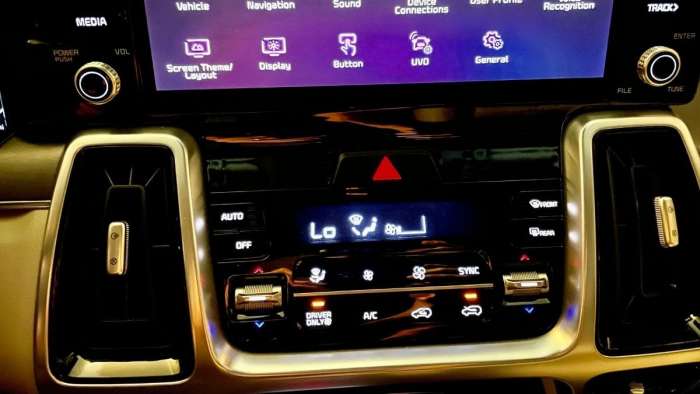
The steering wheel is substantial, pleasant to touch, with satisfying action including the buttons and paddle shifters for the automatic transmission. There are multiple USB ports for charging in each row, though only 1 for connecting a smartphone to the infotainment center, up front, and bluetooth works seamlessly for playing music from your phone. One wireless charger is well positioned under the infotainment center too. Where I find the Kia lacking is in the speed in which the infotainment buttons respond (both physical and on screen). It took anywhere from 1-4 seconds for inputs to result in the requested screen or menu to appear. Although it seemed to speed up after a few minutes/screens, it was as if the OS, which may be Android Automotive 4.2 based, were initially processing stuff in the background. Even at its fastest the near instant response of the touch screen controls in the Tesla are more satisfying. The Kia’s menu system, while deep, is also a little cantankerous to navigate and not because it is hard to do so. It is simply that repetitive taps and scrolls are more laborious compared to the Tesla. However, the Kia’s interface is easy on the eyes. Lastly I’ll say that the view out of the Sorento PHEV is great, if not quite commanding; it isn’t quite as high up as other SUVs of course, but perfectly adequate in my opinion. Also, I have plenty of legroom in all 3 rows, though if I am in the 3rd row I would move the 2nd row seat forward a skosh and my head touches the roof if I don’t slouch; someone a couple inches shorter wouldn’t have to.
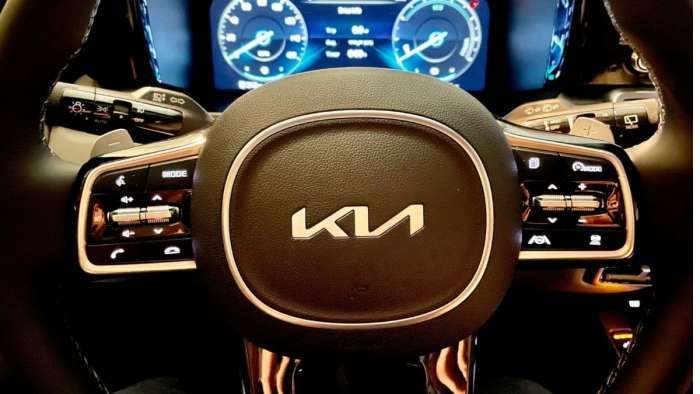
Sliding into the Tesla Model 3 cockpit, literally requires a little sliding. Low slung, more compact and horizontally oriented than the upright Sorento, it’s what one might expect from a sporty sedan. Once inside, the only controls are a couple stocks and scrollable buttons on the steering wheel and of course the central 15” touch screen (essentially a floating tablet on the dash). The touch interface on the screen is almost exactly like a new tablet with immediate responsiveness, the ability to pinch and turn and expand your views of the map, and mostly easy and precise manipulation via one or more fingers.
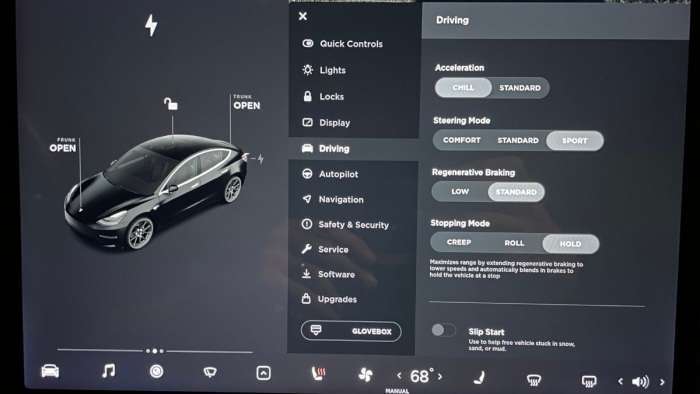
Personally, I am not offended or bothered by the scarcity of physical buttons in the Tesla. Did it take a little getting used to? Of course it did. But after a little practice, and especially after learning voice commands (turn on those heated seats, or set the internal temperature to exactly the setting you want by asking the car!) and how to program the scroll wheels on the steering wheels, it’s really well thought out. It also isn’t difficult to do the other things you need or want to do on the touch screen before you set off or when stopped at a light. The Tesla also offers a number of games, streaming content from the likes of Netflix, Hulu, Disney+ etc., a web browser, some gimmicky apps like a romantic log fire and a whoopie cushion. These are fun to use when you are sitting in the car waiting on a charge to finish or perhaps a curbside delivery. They show, in a small way, how customer focused Tesla is in their design. Otherwise, my Model 3 does not have a heated steering wheel (though adjusting the vents via the touch screen can blow warm air directly onto the wheel/my hands, which is almost as nice). The wheel itself is otherwise a joy to grasp and the steering response can be adjusted to 3 different effort levels (Comfort, Standard and Sport) via the touchscreen as can many other settings.
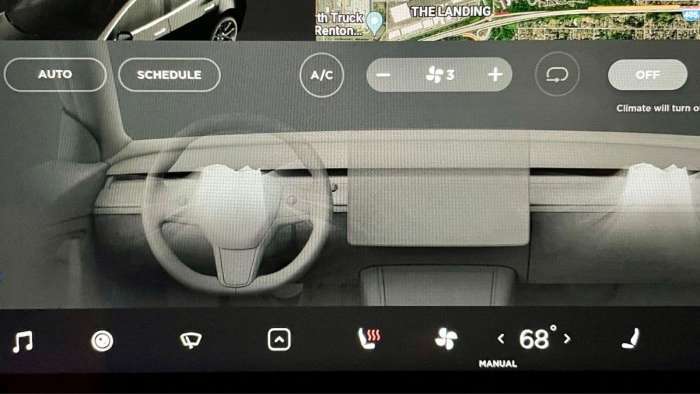
Features:
My Tesla Model 3 does not have Full Self Driving enabled. It only has the standard Autopilot features which means, like my SX-P Sorento PHEV, it has the ability to stop, start, and steer the vehicle within its lane. It is very useful in heavy traffic and or as an assist for those moments when one might need to adjust controls in the vehicle. I find that the Kia’s version of these driver assistance features is more gentle. When the car is nudging me away from the lane marker, it does so a little more gradually than my Tesla tends to (which may be prone to a more rapid correction). Both seem confidence inspiring and it comes down to a matter of preference in my mind.
Regenerative braking in the two vehicles is quite different, in fact they represent two entirely different approaches. If you didn’t already know, Tesla does not include any regenerative functionality in the brake pedal at all. Regen only happens when you ease up on the accelerator or coast in the Tesla, and in mine can be set to either Standard or Low (with Low being the “softer” regen setting). When you press on the brake pedal in the Tesla, you are always applying the friction brakes. In the Kia, coasting barely regenerates any charge. You can tell by feeling the almost imperceptible drag or by looking at the right side tachometer to see it dipping into the Charge section. When you begin to apply the brakes in the Kia, the regen increases, again as evidenced by the tach needle going deeper in the Charge section. Up to about half-way down it seems the Kia is applying mostly or all regenerative braking, and when the tach nears the bottom of the Charge section the friction brakes are providing more of the braking force. The difference is more a matter of preference than anything, though I do wish I had the option to adjust the regen in the Kia like I do in the Tesla.
Other feature set differences I feel are important include accelerator response. It is more linear in the Tesla. In the Kia, there seems to be something of a curve and the first 10-20% of pedal travel is not going to get you moving quickly (that doesn’t happen until you get into the 30-40% range, or more). The Tesla also has more cameras, but lacks the “birds eye view” mode the Kia has. Personally, the ultra wide angle rear camera in the Tesla seems more useful for backing up (though not perhaps when there is an object in the periphery) and the Kia’s birds eye view only feels useful when pulling in or out of very tight parking spots. I don’t have the self parking features that either car can have, optionally, but I would rarely use that feature regardless since I don’t want to risk the shame or repair bills from crunching my car into an object or another car while clumsily controlling it from my phone or key fob.
Fueling:
Lastly, I’ll discuss the “fueling” of each vehicle. Both have charging receptacles of course. Tesla’s sits behind a slick, remotely (and directly) activated panel that flips out of the brake light housing. The Kia’s is more of a traditional flap that hides a liquid fueling cap and opens with a simple press. While the Tesla’s is cooler, it seems more flimsy and more likely to malfunction at some point. In fact I did have mine replaced for free under warranty, though that wasn’t due to malfunction but rather a design flaw with the early Model 3’s magnets that keep the flap closed. The Kia also has a gas cap and tank, on the driver’s side, opposite the electric charging port. The Kia can charge at a maximum of 3.7 kW, and takes about 3.5-4 hours to fully recharge 32 miles+ of range on a 16 amp 240V (level 2) connection. It takes much longer to recharge on the included charger on a 15 or 20 amp 110V outlet. The Tesla can charge at up to 250 kW on a level 3 Supercharger, but in my garage the max my RWD Model 3 can charge would be at 7.7 kW, on a 240V outlet, for about 9-10 hours if I were charging from near empty to a full range.
On long road trips, the Tesla’s GPS knows where all the Supercharging stations are and routes one to them whenever necessary depending on the destination entered. The Kia’s GPS also knows where gas stations are (as have most GPS systems since they came on the market). What matters here is the actual refueling on long trips though. If you’re going to drive beyond the distance of a full charge in a Tesla, in my case around 300 miles, you’re going to have to make a longer stop than for gassing up the Kia Sorento PHEV. But I find it is actually a more pleasant way to travel, in general. It forces me to take 10-20 minute stops every few hours, stretch my legs, get something to eat, see a sight, or take a break. I drove from Seattle to San Diego this summer in my Tesla, stopping every 2-4 hours along the way and easily made it to the Bay Area on my first day, and the rest of the way to San Diego the next. Note I was visiting family in both places so intended to stop and stay awhile (adding some free range at each overnight stay too); it would have taken approximately 24 hours to make that drive otherwise, or 3-4 hours longer than in a gas powered car.
Lastly, on shorter road trips of 300-600 miles, there are other parallels between these vehicles. One such trip for me would involve a 3.5-4.5 hour drive to wine country in either Eastern Washington or various parts of Oregon. “Destination charging” is something that has steadily grown over the last decade plus since modern plug-in vehicles went on sale. In the Kia, though I may have made most of the trip on gas, there are many places that offer free 240V level 2 charging to customers. Since I would typically stop at a winery for an hour or more and might visit 3 or 4 in a day, technically I can use less gas and even do all my local driving once I arrive if I can charge up at the places I stop or stay. The exact same is true for the Tesla only I may have to make a side trip to find a Supercharger should I not be able to charge enough at my destination or at level 2 chargers at places I visit. It is one scenario where driving a full EV turns out to be more like driving a gas car (one has to visit a fueling station). Luckily though, I almost always can charge at my destination or en route as I tend to select lodging with the option or look for and patronize locations that offer level 2 charging. In some cases, in either vehicle, I may get dozens or hundreds of miles of range at no extra cost, and that’s simply a nice perk of driving a plug-in vehicle. I must say that I enjoy driving both of these plug-in vehicles more or less equally, but for different reasons. The Kia is more comfortable and convenient for the whole family on longer trips with a load of stuff, the Tesla more fun and engaging, no matter how long the trip.
Justin Hart has owned and driven electric vehicles for over 14 years, including a first generation Nissan LEAF, second generation Chevy Volt, Tesla Model 3, an electric bicycle and most recently a Kia Sorento PHEV. He is also an avid SUP rider, poet, photographer and wine lover. He enjoys taking long EV and PHEV road trips to beautiful and serene places with the people he loves. Follow Justin on Twitter for daily KIA EV news coverage.








